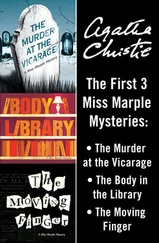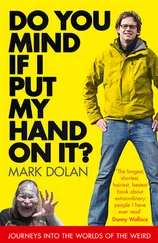Robert Monroe - Journeys out of the body, Practical Guidebook
Здесь есть возможность читать онлайн «Robert Monroe - Journeys out of the body, Practical Guidebook» весь текст электронной книги совершенно бесплатно (целиком полную версию без сокращений). В некоторых случаях можно слушать аудио, скачать через торрент в формате fb2 и присутствует краткое содержание. Жанр: Старинная литература, на английском языке. Описание произведения, (предисловие) а так же отзывы посетителей доступны на портале библиотеки ЛибКат.
- Название:Journeys out of the body, Practical Guidebook
- Автор:
- Жанр:
- Год:неизвестен
- ISBN:нет данных
- Рейтинг книги:5 / 5. Голосов: 1
-
Избранное:Добавить в избранное
- Отзывы:
-
Ваша оценка:
- 100
- 1
- 2
- 3
- 4
- 5
Journeys out of the body, Practical Guidebook: краткое содержание, описание и аннотация
Предлагаем к чтению аннотацию, описание, краткое содержание или предисловие (зависит от того, что написал сам автор книги «Journeys out of the body, Practical Guidebook»). Если вы не нашли необходимую информацию о книге — напишите в комментариях, мы постараемся отыскать её.
Journeys out of the body, Practical Guidebook — читать онлайн бесплатно полную книгу (весь текст) целиком
Ниже представлен текст книги, разбитый по страницам. Система сохранения места последней прочитанной страницы, позволяет с удобством читать онлайн бесплатно книгу «Journeys out of the body, Practical Guidebook», без необходимости каждый раз заново искать на чём Вы остановились. Поставьте закладку, и сможете в любой момент перейти на страницу, на которой закончили чтение.
Интервал:
Закладка:
12. What is most important while using a teleportation technique?
13. What does speed of movement depend on during teleportation?
14. Should a novice apply the technique of teleportation with open eyes?
15. What technique might the translocation with closed eyes technique turn into?
16. Should large or small details be scrutinized while translocating by concentration on remote objects?
17. Is the technique of translocation during separation applied after separation or while beginning to separate?
18. When applying the technique of translocation through a door: is it better if the door is open or closed?
19. Why might translocation by passing through a wall fail?
20. When using translocation by diving, is it important to be in a place where there is something to stand on?
21. While applying the technique of rotation, should rotation be imagined or real?
22. Is it possible to use a translocation technique to attempt finding objects?
23. When using the technique of calling by name, what should be done if the name of a desired person in the phase is unknown?
24. While looking for an object using the method of inquiry, is it important to specify that the object needs to be found “quickly”?
25. How far back must a turn occur when the technique of finding objects by turning is being used?
26. Would the corner of a fence be suitable for applying the technique of finding objects around the corner?
27. Is it necessary to shut the eyes while using the transmutation technique?
Tasks
1. Dedicate the next three phases to experiments with translocation techniques, using all of them and travelling wherever you want.
2. After experiencing three phases dedicated to translocation, select the techniques that work best for you.
3. During the next phase, travel to the Eiffel Tower, to the Moon, and to the homes of some of your relatives.
4. Dedicate the next three phases to experiments with the full range of techniques for finding objects, including translocation techniques.
5. After three phases dedicated to finding objects, select the techniques that you are most comfortable with.
6. In the next phase that you experience, find your mother, and then at the same location locate this textbook, a red globe, and a green rose.
Chapter 10 - Application
THE ESSENCE OF APPLICATIONS
FOR PHASE STATES
Phase perception initially causes so much emotion and variety of experience that the practitioner is often not concerned with the question of how the phase might be purposefully used. The critical question of application becomes even more critical as experience increases. Application of the phase becomes more vivid against the background of understanding how the phenomenon can provide a means of gaining information and new experiences.
Some approach the phase practice with a predetermined goal, uninterested in anything else. With a specific goal, a problem may arise in the origination of the goal because the phase phenomenon is wrapped in a thick layer of prejudices and stereotypes, which often have no bearing on the reality. The primary purpose of this chapter is to precisely separate reality from fiction. Its second purpose is to provide a detailed description of what may be obtained from the practice of phase experiences.
Every proven and accessible practical application of the phase is based on three qualities: a) application founded on the phase’s ability to simulate any object and any space with any properties and functions; b) application based on the opportunity to connect with the subconscious mind in order to obtain information; c) application based on the phase’s ability to impact a practitioner’s physiology.
Most importantly, nothing described in this chapter is difficult to achieve. Any application may be achieved during the very first phase if a practitioner manages to focus and apply the appropriate techniques for translocation or finding objects. Regardless of whether the practitioner adheres to a mystical or pragmatic worldview, a full range of access is inherently possible.
Possible applications of the phenomenon certainly exceed the scope of descriptions related through this chapter. It is possible that other applications simply have not been proven yet, and, so far, the correct methods of practicing these unknown. Only the practitioner may determine the limits of possibility within the phase. Of course, common sense should be applied, or it would be logically and psychologically difficult to disengage misconceptions. The goal of this chapter is to provide a real (though minimal) foundation that is firm and unyielding, whatever the circumstance. If the practitioner follows a strict approach to practice, it will be much more difficult to become lost during further practical and theoretical studies.
APPLICATIONS BASED ON SIMULATION
Many wonder about the nature of the phase state in relation to the brain, i.e. whether or not the phase is all in one’s head. But in the context of applying the phase, this is not a valid concern. Perception of the entire physical environment is performed through sensory organs. In the phase, perception is the same, sometimes even more realistic. Whether everything described in this chapter occurs in reality or is merely simulated makes no difference in terms of the encountered sensations.
Travelling
•
Around the world:
It is possible to reach any point of the planet, and it is particularly interesting to revisit places where the practitioner once lived or visited, and visit places that the practitioner has a strong desire to visit. Every sight and beauty of the Earth become accessible, be it the Eiffel Tower or an island in Oceania, the Pyramids of Egypt, or Angel Falls.
•
Through Outer Space
: Although humankind is not going to reach Mars any time soon, any practitioner may stand on its surface and experience its unique landscape through the use of translocation in the phase. There is nothing more amazing than observing galaxies and nebulae, planets, and stars from the vantage pint of vast space. Of all phase applications available, this one provides practitioners with the most striking aesthetic experiences.
•
To different places in time:
This makes it possible to visit a childhood, to see what a person will look like in the future; a pregnant woman in the phase may see what her child will look like.
Travel far back in time and witness the construction of the Pyramids at Giza, see Paris in the 17th century, wander among the dinosaurs of the Jurassic period.
•
Through different worlds:
Travel a world that has been described in literature or just invented by the practitioner, developed in the imagination. These could be extraterrestrial civilizations, parallel worlds, or universes from fairy tales and films. Any destination is nearby.
Encounters
•
With relatives:
Since relatives cannot always see each other, there is the remarkable possibility to meet each other and talk in the phase. Of course, this does not entail mutual presence. It is enough for one person to possess the required desire - the second person may never even know. Realizing the desire to contact a close relative and exchange information is a treasure.
•
With acquaintances:
Circumstances often prevent seeing people who are important. This is an opportunity to realize a desire and finally meet that certain person again.
•
With the dead:
Regardless of the nature of the phase phenomenon, nothing else yields the possibility to see, talk to, and embrace a deceased loved one. These are vivid, personal experiences, accessible to everyone, and achieving these encounters does not require major difficulty. Courage is the only necessity. From a technique-related point of view, a stable phase and application of the finding objects technique sets the stage for what at first may seem impossible. It should be noted that when a deceased person is encountered in the phase, the distortions caused by the object finding technique may lead to some very undesirable occurrences. If you are interested in this subject, you should carefully study the guidebook
Читать дальшеИнтервал:
Закладка:
Похожие книги на «Journeys out of the body, Practical Guidebook»
Представляем Вашему вниманию похожие книги на «Journeys out of the body, Practical Guidebook» списком для выбора. Мы отобрали схожую по названию и смыслу литературу в надежде предоставить читателям больше вариантов отыскать новые, интересные, ещё непрочитанные произведения.
Обсуждение, отзывы о книге «Journeys out of the body, Practical Guidebook» и просто собственные мнения читателей. Оставьте ваши комментарии, напишите, что Вы думаете о произведении, его смысле или главных героях. Укажите что конкретно понравилось, а что нет, и почему Вы так считаете.










